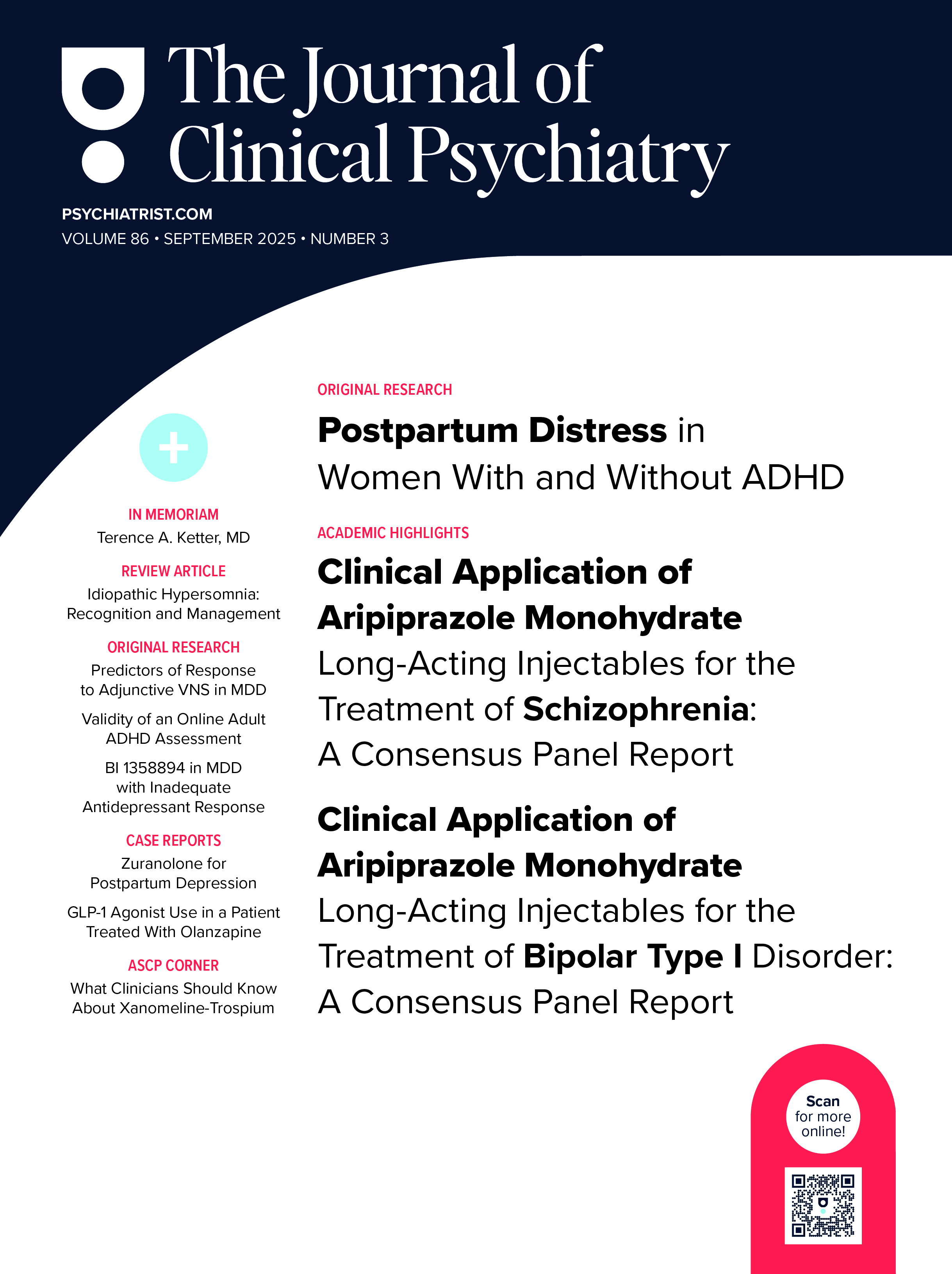Ragy Girgis, MD, MS
Professor of Clinical Psychiatry
Columbia University Irving Medical Center
New York, NY
Ragy Girgis, MD, MS, is Professor of Clinical Psychiatry at Columbia University and Director of the Center of Prevention and Evaluation (COPE), specializing in individuals at clinical high risk for psychosis. His research focuses on the dopamine system in schizophrenia, particularly the role of D3 receptors in negative and cognitive symptoms. He has led numerous clinical trials and neuroimaging studies and is recognized for advancing early intervention and novel treatment strategies in psychotic disorders.
In part I of his series, Dr. Ragy Girgis explores the often-overlooked role of the dopamine D3 receptor in the treatment of schizophrenia. While available antipsychotics are thought to act primarily through D2 receptors, most also bind to the D3 receptor with high affinity. Emerging evidence suggests that the D3 receptor, due to its limbic distribution and high dopamine affinity, may be an important target for addressing negative symptoms and cognitive deficits. Dr. Girgis reviews the neurobiology, receptor distribution, and clinical implications of D3 receptor modulation, highlighting its potential to inform next-generation therapies in schizophrenia.
This presentation is part of the Emerging Approaches in Schizophrenia Editorial Focus collection from Psychiatrist.com News. The collection focuses on the latest advances in schizophrenia treatment, with an emphasis on emerging therapies that go beyond traditional dopaminergic approaches.
Transcript
(0:00 – 1:13) The Unmet Need in Schizophrenia Treatment
Hi, I’m Ragy Girgis, I’m a professor of clinical psychiatry at Columbia University. Today we’re going to talk about the dopamine-3 receptor in the treatment of schizophrenia. It’s very important to find new targets in schizophrenia.
Up to a third of people with schizophrenia don’t respond to any of the currently available treatments and up to 60% only have a partial response. Also, currently available treatments, while being very effective against positive or psychotic symptoms, have limited to no efficacy or effectiveness against negative symptoms or cognitive deficits, which are responsible for a great deal of functional impairment in schizophrenia. It’s very important that we understand the mechanism of action of anesthetic medications because this informs our ability to develop new medications and new targets.
So aside from the recently approved muscarinic agonist, xanomeline, which probably still works via dopaminergic pathways, all currently available treatments for schizophrenia work or have been assumed to function by blocking the dopamine-2 and the dopamine-3 receptor. It’s unclear though whether these medications, the available anesthetic medications, work by only antagonizing the dopamine-2 receptor, antagonizing only the dopamine-3 receptor, or antagonizing or blocking both. People tend to be a lot more familiar with the dopamine-2 receptor and less so with the dopamine-3 receptor.
(1:14 – 3:28) Dopamine D3 vs. D2 Receptors: Anatomy and Function
The dopamine-2 and the dopamine-3 receptors are very similar. They’re anatomically and structurally very similar. The dopamine-3 receptor is much less widespread than the dopamine-2 receptor and has a limbic predominance.
For example, it’s more prevalent in the, or the density is highest in the ventral striatum as opposed to the dorsal striatum. Also the midbrain again, as opposed to, for example, the dorsal striatum and other dorsal or associative regions. This is a graphical representation showing the density of dopamine-2 and dopamine-3 and other, but primarily dopamine-2 and dopamine-3 receptors in the human brain.
As you can see, in more dorsal and associative regions, such as the putamen, the caudate, there’s a higher density of dopamine-2 receptors. But once you move to more ventral regions, limbic regions, the ventral striatum, for example, the globus pallidus, the midbrain, the substantia nigra, the red nucleus, there is a much greater density or a higher density of dopamine-3 receptors. This anatomic localization is critical for understanding a lot of the research and data on the dopamine-3 receptor.
Now dopamine is also 20 times more potent at the dopamine-3 receptor than at the dopamine-2 receptor. And as I mentioned, we also have preclinical data suggesting that modulating the dopamine-3 receptor may have beneficial effects on negative symptoms and cognitive deficits that we don’t see with the dopamine-2 receptor. And this may be related to the limbic predominance of the dopamine-3 receptors. That is why developing treatments that target the dopamine-3 receptor and developing this target for treatment in schizophrenia is important.
(3:29 – 5:16) Why the D3 Receptor Deserves Closer Attention
We’ve also observed abnormalities in the dopamine-3 receptor in schizophrenia, both in pathological studies, which have suggested abnormalities of dopamine-3 receptor mRNA expression in schizophrenia, as well as studies of dopamine-3 receptor mRNA in lymphocytes of people with schizophrenia. Pet studies have also suggested abnormalities of the dopamine-2, dopamine-3 receptor combination in schizophrenia.
I say the combination because until recently, we really weren’t able to explicate the dopamine-3 from the dopamine-2 receptor in human pet studies in schizophrenia. So what we have observed in previous pet studies is abnormalities in several striatal and extrastriatal regions in schizophrenia, suggesting, again, abnormalities in the dopamine-3 receptor in schizophrenia. So more selective pet ligands have demonstrated equivocal findings in schizophrenia.
So it’s not exactly clear what we see in vivo. So in summary, we need more treatments in schizophrenia, especially for negative symptoms and cognitive deficits. The dopamine-3 and dopamine-2 receptors are structurally very similar, but anatomically different.
And that anatomical difference, especially the limbic predominance of dopamine-3 receptors, suggests that there may be a real mechanism by which the improvements in negative symptoms and cognitive deficits that we see in preclinical studies occur. In addition, studies have demonstrated some abnormalities in the dopamine-3 receptor in schizophrenia. Altogether, this suggests that examining the dopamine-3 receptor or modulation of the dopamine-3 receptor as treatment in schizophrenia is warranted.




